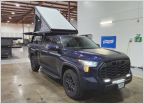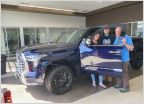-
Welcome to Tundras.com!
You are currently viewing as a guest! To get full-access, you need to register for a FREE account.
As a registered member, you’ll be able to:- Participate in all Tundra discussion topics
- Transfer over your build thread from a different forum to this one
- Communicate privately with other Tundra owners from around the world
- Post your own photos in our Members Gallery
- Access all special features of the site
BayAreaTruckin - '24 Platinum Hybrid
Discussion in '3rd Gen Builds (2022+)' started by BayAreaTruckin, Jul 23, 2024.


 Sully: The Blurple Beast - Super Pacific Build
Sully: The Blurple Beast - Super Pacific Build Exploring Cascadia - '22 1794 TRD-Offroad + Longbed
Exploring Cascadia - '22 1794 TRD-Offroad + Longbed 60centenergy's 2024 Lunar Rock SR5 TRD Sport
60centenergy's 2024 Lunar Rock SR5 TRD Sport 2025 Ice Cap TRD Rally "Semi-Pro"
2025 Ice Cap TRD Rally "Semi-Pro" Loc’s Tundra Build
Loc’s Tundra Build Calif-Tundra’s - 2023 Limited TRD OR/Semi-Pro Build
Calif-Tundra’s - 2023 Limited TRD OR/Semi-Pro Build








